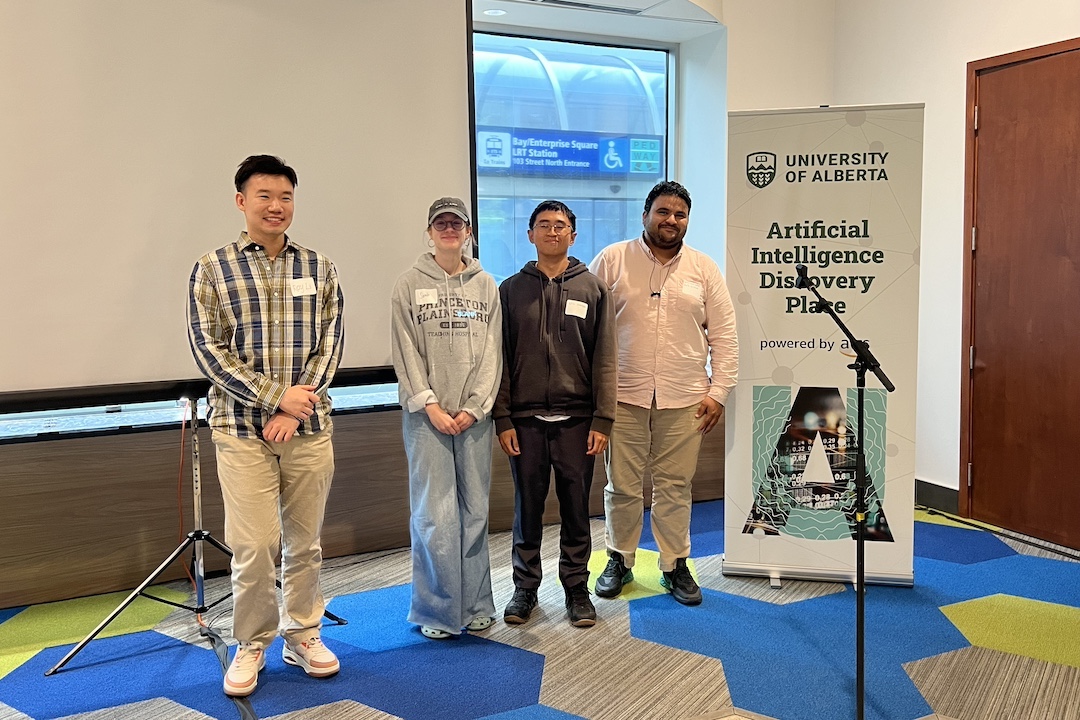The University of Alberta hosted a recent wildfire hackathon at roughly the same time as a wildfire burned structures in Jasper and 25,000 residents and park guests were forced to flee.
Fittingly, given what happened as the fire bore down on Jasper, the winnner of the July 27 wildfire hackathon uses tech to combat misinformation during just such a crisis.
"We were looking at some relevant societal challenges that we're aware of, and to bring our expertise, and have impact in society," David Chang, the director of innovation and partnerships for the office of the Vice-President of Innovation at the U of A, told Taproot shortly before the hackathon.
Savannah Lane, a startup specialist at the U of A in the office of the Vice-President of Innovation, told Taproot after the Jasper wildfire that the hackathon was prescient. "Little did we realize how relevant this initiative would become, and we are proud of the work of our participants in developing new potential solutions for this crucial issue," Lane said.
Hackathon winners Eric Gamboa, Sarah Muir, Mohamed Sabek, and Roy Li — graduates of the U of A's engineering and computing science programs — created what they called the disaster information verification system. Essentially a chatbot, the system uses Amazon Web Services tools to combat misinformation by quickly answering user questions via official information from the Government of Alberta and major news outlets. With accurate information, people evacuating or checking up on family members near a crisis will be less influenced by hearsay or incorrect information.
The recent wildfire in Jasper illustrated multiple challenges misinformation can create, including miscommunication of when the fire would reach the town. This is the situation the winning team's system at the hackathon is meant to address.
There have been many innovative technologies for tracking and predicting wildfires developed recently, including by Nu Terra Labs, which participated in the hackathon. Their Firesafe AI services use a combination of mobile cameras, drones, and machine learning to evaluate risk and warn users about wildfires in advance.
Chang said the hackathon, nonetheless, saw a missing piece that technology could address. "People trying to solve the wildfire prediction problem, but specifically on the communication and evacuation management side, felt that there was a little bit of a gap. When we spoke with (the Alberta Emergency Management Agency), they were quite keen on and interested in what the solutions would be."
The agency also helped the team set up the challenge for participants.

Hackathon winners Roy Li, Sarah Muir, Eric Gamboa, and Mohamed Sabek. (Savannah Lane)
The event, held by the U of A and Amazon Web Services, was open to the whole community. Students from the U of A, NAIT, SAIT, MacEwan University, Concordia University of Edmonton, the University of Calgary, and industry professionals participated.
The hackathon took place over 12 hours. Participants worked to tackle the problem of coordinating emergency responses during wildfire evacuations using AWS's cloud computing tools. The event included speakers like Nate Glubish, minister of technology and innovation, and Sheetal Walsh, the CEO of the U of A's Innovation Fund.
Albertans have become familiar with the threat of wildfires and smoke in the summer. The Jasper wildfire made international headlines. According to the Government of Alberta wildfire dashboard, there are 127 wildfires currently burning and 957 that have been extinguished this year alone (current as of Aug. 14).
"Seeing in the last couple of years the devastating impact that wildfire has had on communities, wildlife, the environment, it's something that you know is crucial and managing aspects of disaster, and ensuring efficient communications and effective evacuation procedures with something that we see as a need, especially in Alberta," Lane said.
The hackathon was the first event hosted at the U of A's Artificial Intelligence Discovery Place, since it was announced on Jan. 29. It's a collaboration between the university and AWS located at Enterprise Square. Even though the hackathon was hosted there, it's not quite ready for the general public.
"This is a little bit prior to launch," Chang said. "The participants are going into the space as a bit of a soft launch." Chang added that there could be a larger opening event in the fall.
Lane said Discovery Place's goal is for researchers to collaborate, advance research, tackle societal challenges, and potentially even commercialize products. Lane added they hope to have entrepreneurial programming at the location in future, and to open AWS's tools to students and the community.
